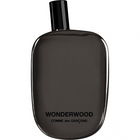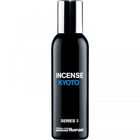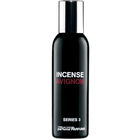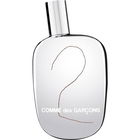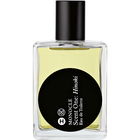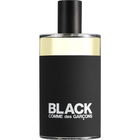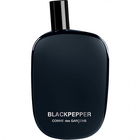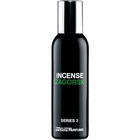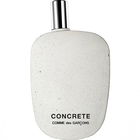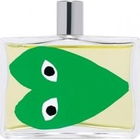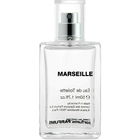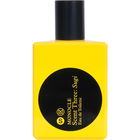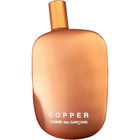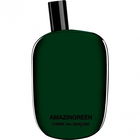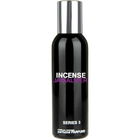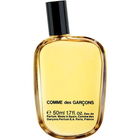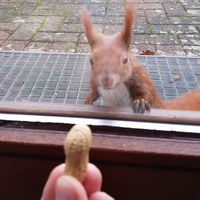
Meggi
1018 Reviews
Translated · Show original

Meggi
Top Review
29
Clear, Cool, Reduced
The opening of Blue Cedrat is cool and non-sparkling-citrusy. Slightly synthetic. In fact, the thought of citron came to my mind even before I realized ("schwante" simply doesn't fit...) that the term Cedrat indeed refers to the citron lemon. Great. Checked off.
What the alleged rose is about, I initially do not know. Metallic rose accord? I might have expressed something like that acoustically last year after I drove the scissors deep into my finger through the leather glove while pruning roses. A metallic note can certainly be extracted from the fragrance if desired; it likely derives from spice and a diffuse, cold green.
But primarily, bitter spice reigns. The details on the CdG website lead us in the right direction: It mentions a "zesty bitter quinine accord … (juniper berries, Angelica roots)," thus referring to quinine. Most of us probably know it merely as a herbal-appetizing-fine flavor enhancer from corresponding sodas, but in its pure form, it must really pack a punch. Thus, the juniper blast presented here is certainly quite alright; hardly a minute after spraying, it kicks in; I have to somewhat imagine the bitter twist from Angelica (which I don't know in its pure form anyway). This impression lasts quite a while, essentially until the end.
Regarding cedar, I wonder if I might be smelling pine instead. There is a mild-aromatic-needly twist in there that I cannot solely explain with cedar and juniper. Scattered hints on the depths of the internet suggest that "Italian cedar" could be something special, but given the sparse findings and the often dubious scientific credibility, it seems questionable to me that this is a botanical name.
Aside from that, the term "Cedrat" is certainly also intended as a little cedar/citron joke; we can surely trust CdG to have thrown a few smoke bombs left and right to fuel the general guessing game.
After at least three or four hours, I finally perceive rose, albeit only directly on the skin. However, there is nothing metallic to be discovered about it in the narrower sense.
The fragrance is otherwise very stable. This may be due to the already mentioned synthetics. I often join such complaints enthusiastically grumbling, but in this case, I am satisfied - for a change, no penetrating artificial wood. Moreover, a lingering freshness, leaning towards citrusy acidity, accompanies the static spicy tone well into the afternoon. It smells exactly like the bottle looks: clear, cool, reduced. Only later does the fresh acidity completely depart, leaving behind a lonely, unfortunately quite joyless, sinus-tone-like bitter green herb that holds firm until the evening and, fragmentarily, even well into the next day.
Conclusion: Blue Cedrat truly does not shine with any notable development. Nevertheless, I find it extravagantly straightforward in its spicy-freshness and quite like it despite the somewhat unfortunate ending; definitely prefer it over its overly reduced brother Blue Encens.
I thank Kovex for the sample.
What the alleged rose is about, I initially do not know. Metallic rose accord? I might have expressed something like that acoustically last year after I drove the scissors deep into my finger through the leather glove while pruning roses. A metallic note can certainly be extracted from the fragrance if desired; it likely derives from spice and a diffuse, cold green.
But primarily, bitter spice reigns. The details on the CdG website lead us in the right direction: It mentions a "zesty bitter quinine accord … (juniper berries, Angelica roots)," thus referring to quinine. Most of us probably know it merely as a herbal-appetizing-fine flavor enhancer from corresponding sodas, but in its pure form, it must really pack a punch. Thus, the juniper blast presented here is certainly quite alright; hardly a minute after spraying, it kicks in; I have to somewhat imagine the bitter twist from Angelica (which I don't know in its pure form anyway). This impression lasts quite a while, essentially until the end.
Regarding cedar, I wonder if I might be smelling pine instead. There is a mild-aromatic-needly twist in there that I cannot solely explain with cedar and juniper. Scattered hints on the depths of the internet suggest that "Italian cedar" could be something special, but given the sparse findings and the often dubious scientific credibility, it seems questionable to me that this is a botanical name.
Aside from that, the term "Cedrat" is certainly also intended as a little cedar/citron joke; we can surely trust CdG to have thrown a few smoke bombs left and right to fuel the general guessing game.
After at least three or four hours, I finally perceive rose, albeit only directly on the skin. However, there is nothing metallic to be discovered about it in the narrower sense.
The fragrance is otherwise very stable. This may be due to the already mentioned synthetics. I often join such complaints enthusiastically grumbling, but in this case, I am satisfied - for a change, no penetrating artificial wood. Moreover, a lingering freshness, leaning towards citrusy acidity, accompanies the static spicy tone well into the afternoon. It smells exactly like the bottle looks: clear, cool, reduced. Only later does the fresh acidity completely depart, leaving behind a lonely, unfortunately quite joyless, sinus-tone-like bitter green herb that holds firm until the evening and, fragmentarily, even well into the next day.
Conclusion: Blue Cedrat truly does not shine with any notable development. Nevertheless, I find it extravagantly straightforward in its spicy-freshness and quite like it despite the somewhat unfortunate ending; definitely prefer it over its overly reduced brother Blue Encens.
I thank Kovex for the sample.
15 Comments




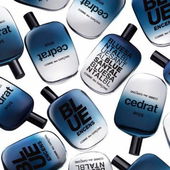
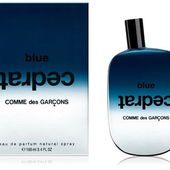
 Juniper berry
Juniper berry Italian cedar
Italian cedar Metallic notes
Metallic notes Angelica root
Angelica root Rose
Rose









 Hermesh
Hermesh natafriden
natafriden celeblas
celeblas Ch03np
Ch03np Stulle
Stulle Parma
Parma Scapa
Scapa Jensemann
Jensemann Ohdeberlin
Ohdeberlin Schili
Schili